7 Helping Bees in Your Own Backyard
What do bees do when they get married? They go on a honeymoon!
Now that you’ve learned more about bumble bees, let’s talk about how you can become an advocate for bumble bee conservation by helping bees in your own backyard! In this chapter, we will highlight several different ways you can get involved in bee conservation through the magic of the internet.
Creating a Pollinator Garden
Building a bumble bee oasis is much easier than you might think. In fact, pollinator gardens are usually much easier to maintain than traditional lawns and decorative gardens. When creating a habit for bumble bees in our backyard we use native plant species that grow easily in our climate and therefore they require less maintenance and little watering once they get going. Here are a few tips on how you can create habitat in your own backyard that is welcoming to bees:
1.Plant native species of flowers – Transform a part of your lawn into a bumble bee paradise. Visit your local garden centre to learn about local species of flowering plants that you can purchase for your pollinator garden.
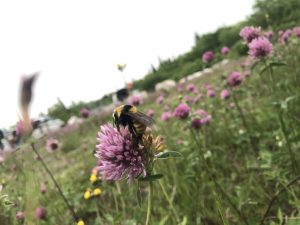
2. Create a bumble bee bath – Bees need water too! Use a shallow plate, stone, or plant pot tray and fill it slightly with water (not too much as you do not want the bees to drown). Add decorative stones and other objects to your bee bath to provide a perch for drinking bees or a nice resting place. Change the water every few days to prevent mold growth and to dispose of mosquito larvae.
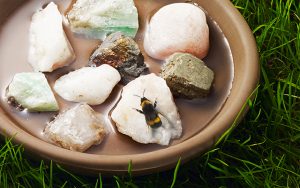
3. Maintain a messy garden – That’s right! Keeping your garden untidy and in its natural state will encourage bumble bees and other insects to make their home in your yard. Instead of raking leaves, leave them scattered across your lawn to provide shelter and habitat for insects and their larvae.
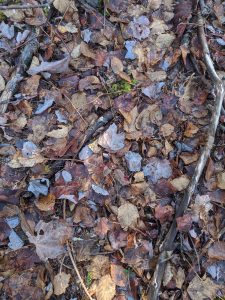
4. Avoid using pesticides – Pesticides and other harsh chemicals such as fertilizer have no place in your pollinator garden! Keep your bee oasis as natural and organic as possible to avoid harming any bee visitors.
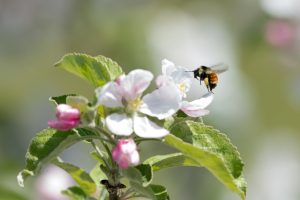
The David Suzuki Foundation has an excellent series of blog posts that discuss how you can create pollinator gardens in your own backyard. Visit their website and explore the resources they have available if you want to learn more about creating a beautiful pollinator garden.
Join an Online Conservation Initiative
You can take your bee learning journey one step further by getting involved with a national organization that promotes healthy habitats for bees. Take advantage of their educational resources and free programming to learn more about these important insects. Here are a few ways you can get involved in bee conservation online:
- Take Bee City Canada’s Pollinator Pledge and join a national network of pollinator pals! Looking to go the extra mile? Pitch the idea to your school or community to become a Bee School or Bee City! Explore their website to learn more about bees and other pollinators through online webinars, activities, and more.
- Join the David Suzuki Foundation Bee-bnb revolution by becoming a backyard super host for wild bees and other pollinators. As a Bee-bnb host, you’ll pledge to provide habitat in your backyard for bees by planting native wildflowers, creating suitable nesting habitats, and more! They also have lots of resources on their website if you’re interested in learning more about bees and how you can help them.
- Register an account with iNaturalist or Bumble Bee Watch and upload photos of bumble bees you find in your community. These online citizen science platforms record your findings and scientists use them in conservation research. You can also check out our iNaturalist project for citizen science bumble bee observations in Cape Breton.
Photographing Pollinators
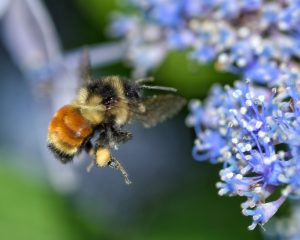
Bumble bees are an important part of ecological communities. They pollinate the plants of the food we eat and they contribute to the overall biodiversity of ecosystems. Interestingly enough, the best thing you can do to help protect bumblebees is to photograph them! In this section, we will discuss how you can help protect bumble bees one photograph at a time.
Taking photos of bumble bees is an important part of conservation research. The more citizens we have photographing bees and participating in data collection, the more we can learn about the vulnerable populations that we are trying so hard to protect. Bumble bees are very gentle creatures and they generally don’t mind when you get up close and personal to get that perfect shot! When approaching a bee, make sure you walk up to it slowly and try to avoid blocking their light with your shadow. Most importantly, if a bee appears to be agitated, make sure you back off and give it some space to forage and pollinate without a camera in its face!
How to photograph these bee-utiful creatures
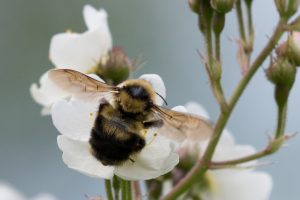
Lights…camera…conservation! When taking photos of bumble bees, it is important to capture their identifying characteristics which are found on their back, side, and face. It is much easier to identify a bumblebee to species if you have clear, quality photos of these components.
After you photograph your bumble bee, you can upload your photos to platforms such as iNaturalist or Bumble Bee Watch to share your observation with budding naturalists and researchers. When you share your findings online, bee researchers will be able to identify the bee and determine what type of habitat it is found in as well as the range of different types of bumble bees. This information is very helpful when we are trying to conserve Species of Special Concern. The more we know about these charismatic creatures, the more we can do to protect them!
If you want to learn more about how you can photograph bumble bees visit Photographing bumble bees. You can also check out Brett Forsyth’s free pocket guide on photographing bumble bees here.
A species that has exists within its natural range and was not introduced to an area by humans.
A harmful substance that kills living things such as plants, insects, or fungi. These chemicals are often used in industrial agriculture practices.
A habitat that is made up of a variety of different species which means that it is healthy and resilient to environmental disturbances such as climate change. Human disturbances can have a negative impact on biodiversity.
A geographic area where plants, animals, and other organisms, as well as weather and landscapes, work together to form a bubble of life (Source: National Geographic. Visit Site)

